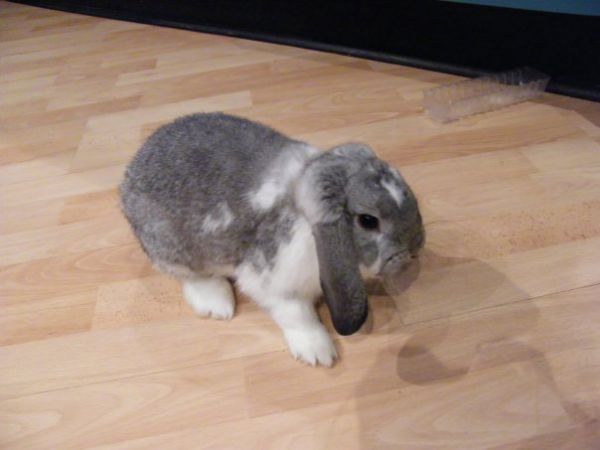GI Stasis Troubles A Dwarf Lop Rabbit
Wendy visits PVE with a sore stomach
One Tuesday evening, an adorable Dwarf Lop rabbit called Wendy* visited Perth Vet Emergency because she wasn’t feeling well. Wendy’s owner noticed she hadn’t been well since the previous evening. She was restless, not eating and kept stretching as though in pain.
Dr Pattison examined Wendy and asked her owner important investigative questions. She was able to ascertain that Wendy is an indoor rabbit with a healthy diet of fresh hay, pellets and the occasional broccoli, carrot or dried banana. There’d been no recent changes to her diet or environment.

GI Stasis is a common condition in domestic rabbits which can be mild or serious. An underlying medical condition, stress, poor diet or lifestyle issue causes a build-up in the intestines resulting in painful bloating. The discomfort can cause the rabbit to stop eating or drinking with worsens the condition. In serious cases, toxins can be released which subsequently lead to life threatening conditions such as sepsis and organ failure.
Fortunately for Wendy, her owner and Dr Pattison addressed the condition while it was still mild. The Dwarf Lop was given motility drugs to help get things moving along in her digestive tract as well as pain relief to treat her abdominal pain.
Dr Pattison explained Wendy’s condition to her owner with advice about syringe feeding a dietary supplement to provide fibre to the gastrointestinal tract which can assist with increasing motility. She was discharged home after her PVE consultation with instruction to visit her vet the next morning to check her health was improving as well as discuss further investigation into the underlying cause to avoid recurrence.
Wendy’s PVE report was forwarded to her General Practitioner so they were aware of her condition prior to her appointment. The gorgeous rabbit made a great recovery but her owner found comfort knowing the team at PVE were available all night to offer advice or intervene if Wendy’s health deteriorated.
* Wendy’s name was changed to protect her and her owner’s privacy.
Written by Solange Newton & Dr Penny Seet
Photography by Kate Loveland



